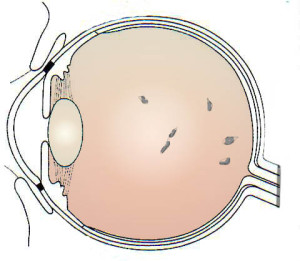The vitreous is the transparent gelatinous mass that occupies the center of the eyeball. It consists of collagen fibers and a liquid , hyaluronic acid .
Normally it is perfectly clear. Over time it changes ; its liquid component , hyaluronic acid is scarce , and fibrillar elements clump forming packets,
and these condensations of collagen fibers that form the so-called floaters . The process is more important in myopic .
The patient speaks fly following his gaze , especially on light background, less in the dark.
There also has floaters following inflammation or vitreous hemorrhage .
There is finally the great floaters which is derived from a vitreous detachment .
WHAT TO DO ?
The key is to ensure to his ophthalmologist , through an examination of the fundus , there is no associated retina that may cause retinal detachment , in which case treatment with lesions Argon laser is proposed .
Wearing tinted glasses reduces visual discomfort.
Prescribed by your ophthalmologist medical treatment may be beneficial.
Case by case basis , if discomfort is consistent , we can offer laser treatment or vitrectomy .
Recommended food :
Feel free to eat foods rich in vitamin C and E, zinc, lutein that help prevent vision problems associated with aging. Here is a list of beneficial foods for your eyes:
Fatty fish (salmon, sardines …)
Eggs and nuts
Carrots, oranges, avocados …
Leafy green vegetables (broccoli, cabbage …)
Malnutrition or smoking habits, which could seriously affect the functioning of the body.




